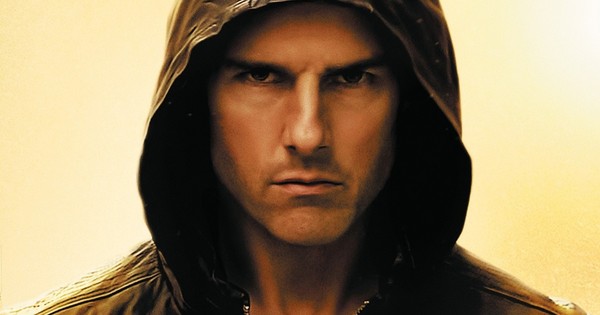
Often overshadowed by the likes of James Bond and Jason Bourne, Ethan Hunt isn’t generally thought of as a true icon of the spy thriller genre. But beyond Tom Cruise’s nonstop quest to quench his ego, he’s produced and starred in one of the most consistently satisfying action film series of the past two decades.
Though they’ve evolved – or devolved, depending how you feel about it – from spy films to set-piece-invoking narratives that rival many a Fast and Furious film’s knack for pure action revelry, Cruise has always had his sights on delivering lip-smacking blockbusters.
The series’ enduring popularity through its many gaps between entries has been pivotal for Cruise’s many careers avenues. Early success led him to challenge himself by working with Stanley Kubrick and Paul Thomas Anderson. Mission: Impossible’s resurgence this decade has also sustained his waning box office credibility – see recent underperformers like Oblivion, Edge of Tomorrow and obviously The Mummy.
The man simply wants to entertain, and that’s why he keeps it all going. Here’s hoping that the two month delay following Cruise’s recent set injuries doesn’t put off the summer 2018 release date of the sixth mission. But in the meantime, this is how the series of impossible missions stacks up so far.
5. Mission: Impossible 2
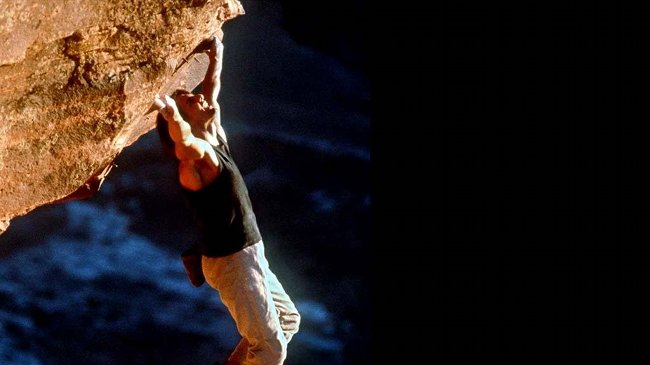
If this otherwise solid spy thriller series has one real stinker, it’s obviously John Woo’s Mission: Impossible 2. Never has Cruise been smugger, the romance more base and forced, and the unintentional humor been more prevalent.
Woo is a visually dynamic director but the surprisingly set-piece-free film doesn’t allow his indulgence in action to shine until a most agreeably macho final act, which peaks out with a Cruise staple of gnarly motorcycle stunts. The first half of the script has little memorable or of consequence for Woo to go all-out where he thrives best – Hard-Boiled this is not. When Woo actually does get to use his trademark show-stopping slow-mo, we can really see how poorly this Mission has aged, as an era of quick cutting action has made us very aware of the fakery of stunt fighting.
Hans Zimmer’s longwinded, guitar-laden score hardly works the way it does in The Dark Knight or Inception, as for the majority of the picture we aren’t watching anything worth calling intense or suspenseful. Our villain, Sean Ambrose (Dougray Scott), while helping deliver an insane western standoff in a final showdown, is a crudely undeveloped part of the story. Ambrose is the most prominent villain of the series and also one of the worst.
The dialogue is either dutiful or terribly uninspired, especially anything between Cruise and Thandie Newton, whose onscreen romance is rushed and utterly unconvincing. Newton, while still playing what appears to be a strong female character as thief Nyah Hall, is objectified more than any actress in the series, and the script is startlingly sexist even when she’s off-screen. Nyah is a link of infatuation between Hunt and Ambrose, and this story element may pay homage to Notorious rather slyly, but it doesn’t have the complexity to suffice now in the new millennium.
Mission: Impossible III would only continue to prove that a stock love interest used to heighten the stakes is not what makes Hunt noble or relatable. Hunt has always been much less sexually motivated for being otherwise Bond-like, and Ethan’s best entries have been the one’s with the fewest romantic threads.
Cruise’s weak character motivations, discount Simon Pegg (actually John Polson in a thankless role) and the unwelcome continuity of Ving Rhames as Luther Stickell being established, all make Mission: Impossible 2 a clear low point for the franchise. Every element is as one-dimensional as possible, but Robert Towne’s script is more a bore than sheer entertainment – a two-hour action film with about an hour too much dialogue, and about three mask reveals too many.
4. Mission: Impossible III
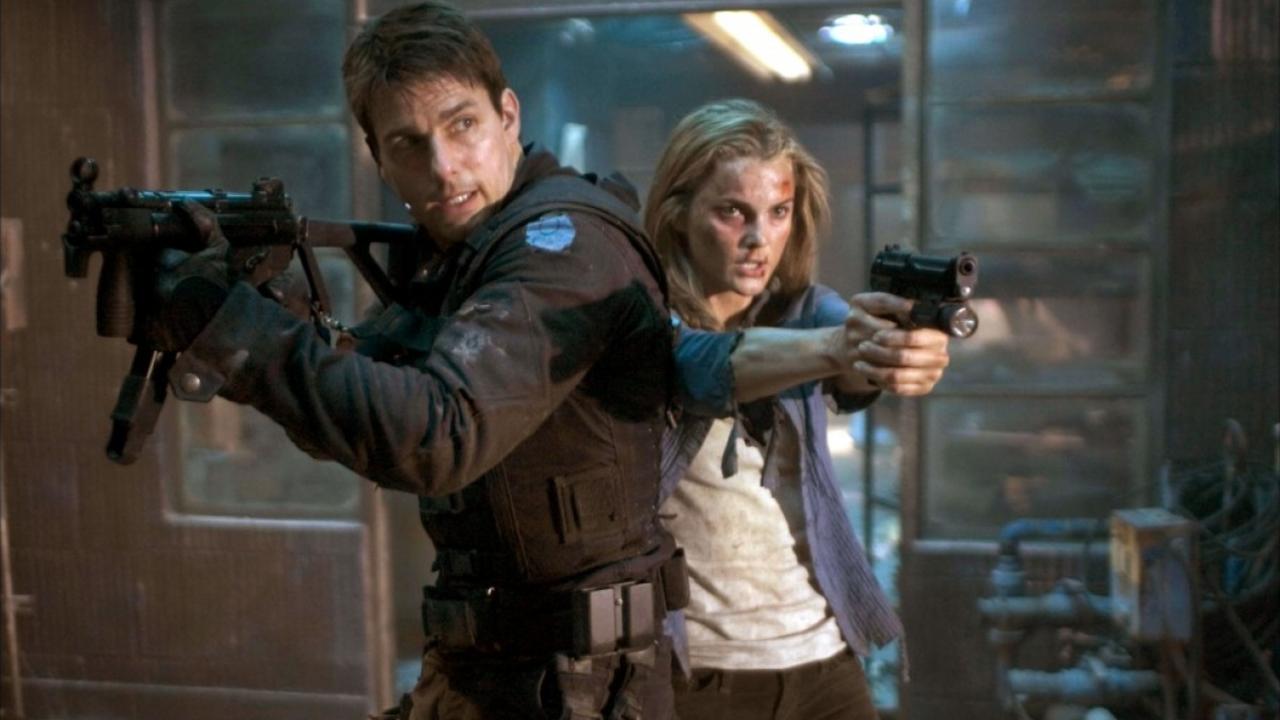
The directorial debut of J J Abrams is the most difficult of the series to evaluate. It has so much going for it and yet a number of frustrating detractors.
Foremost, Philip Seymour Hoffman’s Owen Davian is the best villain ever to oppose Ethan Hunt – Hoffman is frankly too good for the material, and what little he is present for is superbly intimidating. The film is also feverishly frenetic once it gets going, and I’d be lying if I said it doesn’t pay off quite a few times. The second act of III is one of the most exciting portions of the franchise, from the Vatican mission to the big bad bridge sequence to Ethan’s detainment and escape from IMF.
The film’s lightning-quick pace is both an asset and a crutch. First, the anticlimactic finale – in which Cruise, an explosive charge in his brain, is comically brought down to Davian’s skill at fisticuffs – and the early Berlin extraction coast on Abram’s transfixing saturation of color, quick cuts and Michael Giacchino’s amped score. Not to mention the actual retrieval of the laziest MacGuffin of the series, the Rabbit’s Foot, is a classic case of blue-balling an audience.
We get the crescendo of tension as Hunt is about to make the maniacal first jump, and then the most important moment in the film happens off-screen before we come back to a choppy moment of post-heist highway escape. But while cool stuff occurs elsewhere, the completely undeveloped extra team members (Maggie Q and Jonathan Rhys Meyers) are given some worthless dialogue, as we watch III essentially shrug off its narrative centerpiece. “Langley was a cakewalk compared to this,” Luther says in an unwarranted callback, but nothing in this film tops the minimalist thrills of the most iconic set piece of the franchise ten years earlier. For as much as III gives you, it’s always compensating for weakness in story and structure.
Attempting to increase the sense of danger with a serious love interest in Michelle Monaghan also has a similar problem of trying too hard. Monaghan is far from an engaging performer, though that’s not to say that her and Cruise don’t possess certain charms together. But by trying to make this film so personal by having Hunt’s wife in jeopardy, the film doubles down on damsel-in-distress clichés.
The film thinks it can make Tom Cruise’s character more human with a fiancée in the midst, but it’s an emotional folly. Rogue Nation, Ghost Protocol and the original all have more interesting female roles specifically because they shy away from being outright male-gaze-directed sex objects and actually have character, despite still being eye candy.
3. Mission: Impossible – Rogue Nation

The worst thing I can say about the fifth and latest Mission: Impossible is it has no particular flavor. Although Robert Elswit’s carryover work from Ghost Protocol does not go amiss with his sleek and sumptuous cinematography, this is still the least visually idiosyncratic entry. It’s missing some identity, but it’s remarkable how much the Rogue Nation gets right otherwise.
The opera scene is on par with the thrilling heights the series has scaled to date. The second act double whammy of action – the underwater sequence followed by the high-speed car and motorcycle chase – is a fine execution of the formula laid down by the past two films. Cruise shows no real signs of wear and tear – in fact in those moments just mentioned, it’s clear that despite pushing his mid-50s Cruise will never stop trying to top himself. It’s been an admirable obsession of his to watch play out, but let’s hope it doesn’t get embarrassing.
Simon Pegg is fully locked in as an essential piece of the supporting cast (he’s practically second bill) and the series has most importantly been blessed with its strongest female character to date in Rebecca Ferguson as British Intelligence agent Ilsa Faust. The most enigmatic femme fatale of the franchise is a physical equal to Cruise as well as the most platonic female lead in relation to Hunt. Ferguson’s return in the sixth film is a sensible move.
The script makes mostly smart choices but doesn’t know what to do with several of its actors like Sean Harris as the series most forgettable villain and Jeremy Renner, whose role is unfortunately reduced after his substantial presence in Ghost Protocol. Alec Baldwin may be of more interest now that he’s the new Secretary of the IMF but here, like with Laurence Fishburne in M:i:III, he’s simply a roadblock for Hunt among a much more interesting plot. Ving Rhames is also somehow still in these movies – isn’t it curious that the stronger films are usually the one’s with less Luther?
At worst, Rogue Nation plays like a greatest hits record while also unwisely blowing smoke with lines like “this could very well be our last mission.” But Christopher McQuarrie does a bang up job following the sliver of promise he displayed in the old school actioner Jack Reacher. I would hope that as the stunts get more ridiculous that McQuarrie’s willing to take more chances along with Cruise in the sixth film. With Rogue Nation alone he rides the line of expectation and gives us a worthwhile spy thriller and a strong Mission: Impossible film to boot.
2. Mission: Impossible
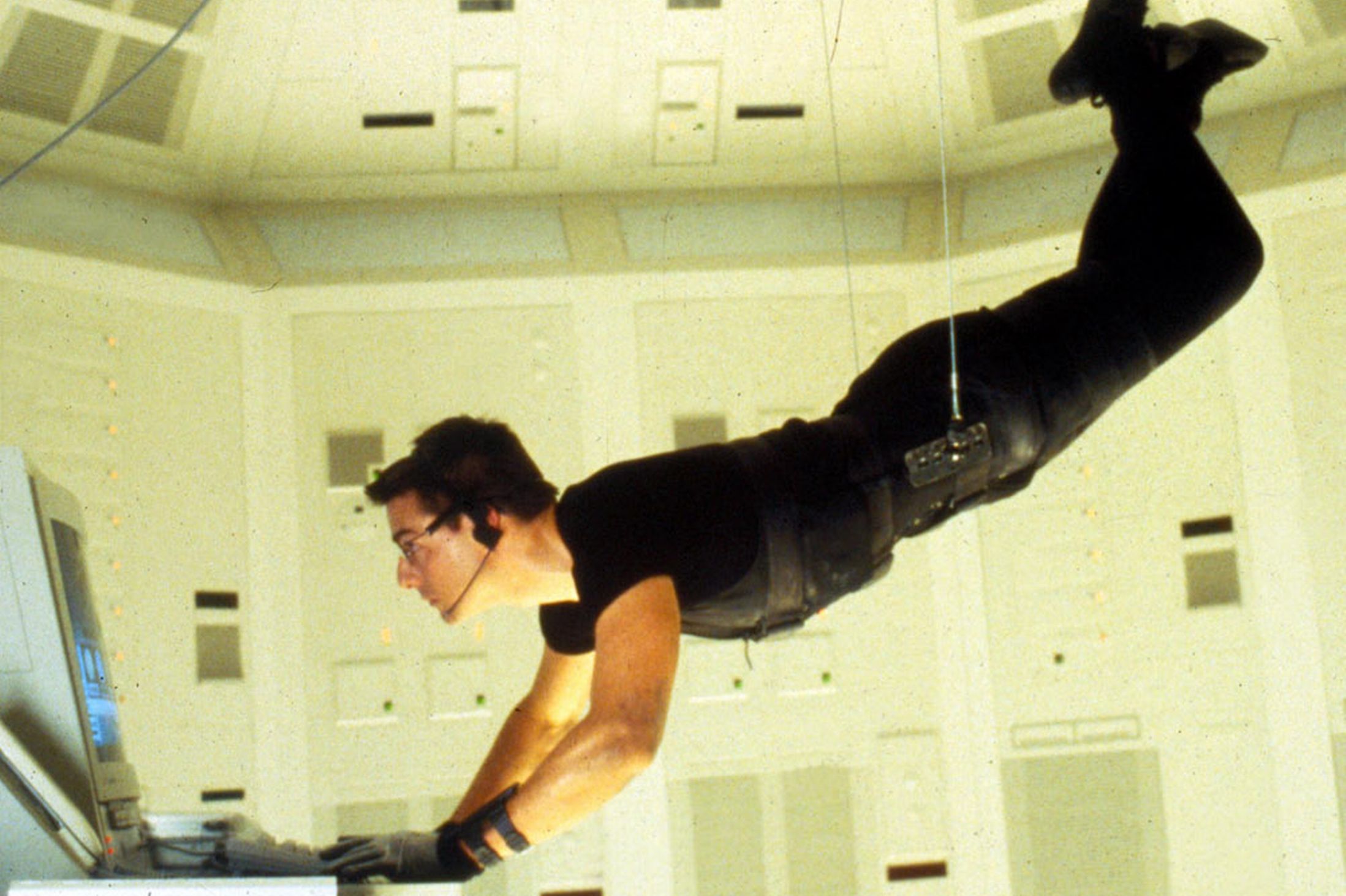
Aged now to the point of seeming quaint to our much changed action thriller standards, Brian De Palma’s stimulating inception to the Mission: Impossible franchise set a fine benchmark for the quality of future installments to surpass back in 1996.
Cruise, a fan of the original television series as a young boy, worked with Paramount to get the film off the ground after thinking the property could make for a good film. This was the first project for Cruise’s new production company.
In many ways this is the only film of the series to feel like an actual spy film especially as epic stunts and explosions have steadily replaced the real sleuthing. Aside from the finale and bloody opening mission wherein Hunt thinks he’s lost his whole team, the film plays very restrained to current expectations of the genre.
De Palma turns the tension up notch by notch with sparing but effective dutch angles and flowing crane shots. There is palpable paranoia and double crosses, a fine femme fatale in Emmanuelle Béart and a plot that seems like a cliché now that so many spy films – Bourne, Bond and even Atomic Blonde recently – have used a secret list of undercover agents as a routine McGuffin. But the most famous scene of the franchise – the silent heist at CIA headquarters – still holds up as a classic sequence and brilliantly counterintuitive thriller moment. You can still feel yourself hold your breath as it unfolds.
Jon Voigt, Vanessa Redgrave and Kirsten Scott Thomas legitimize otherwise hokey dialogue, while De Palma makes the most of the appropriately convoluted material. The film is dense enough to not realize how silly it is, but not impenetrable enough for an audience not to grasp essentially what’s happening. Most installments are made simpler depending on how much their action sequences take up the runtime, but the original Mission: Impossible uses neo-noir genre elements in order to make the escapist immersion coherent and engaging.
1. Mission: Impossible – Ghost Protocol
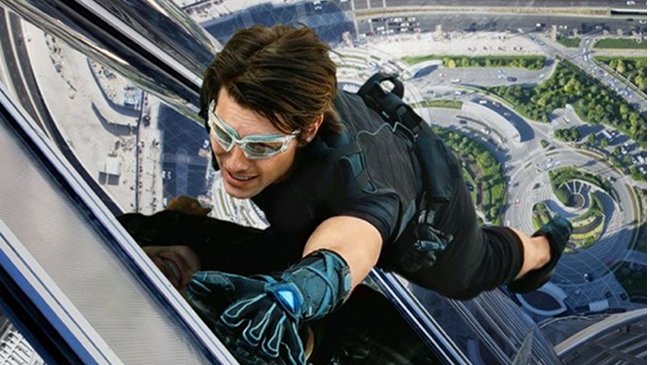
Brad Bird’s live action directorial debut took what up to that point had been a mixed bag of Tom Cruise vanity projects and justified the franchise through and through with its finest installment to date. Ghost Protocol, the fourth chapter from 2011 proved (along with the more recent help of Rogue Nation) that the series had somehow improved with age, and actually, depending on how you felt about John Woo, stands as one of the most enjoyable action franchises of our time.
Ghost Protocol is as grand a spectacle as you could hope for from the spy genre, while simultaneously exhibiting more humor than ever as Simon Pegg’s Benji has wisely been incorporated into the main cast.
The gadgetry is perhaps at its most impulsive as well, with hyper-modern spyware on display as much as unreliable tech, which is used when our disavowed team is left with the contents of a single safe house. If not for several other reasons (like the use of vertigo-inducing IMAX cameras), the scaling of the Burj Khalifa is made more tense by Cruise losing the grip gloves he uses to crawl up several floors from the outside of the world’s tallest building.
The nuclear-era, Cold War throwback premise seemed old-fashioned five years ago, but amongst the conflict between the U.S. and Korea, as well as the current administration’s ties to Russia, Ghost Protocol has suddenly become more contemporary than ever before. And the plot is finally a more or less believable one as a nuclear extremist Kurt Hendricks (the late Michael Nyqvist) must be neutralized – the stakes are very clear throughout.
Jeremy Renner and Paula Patton make for the finest extra players to the always-assembled team. The past disregard to the other the same archetypes in the story separate Ghost Protocol from the rest of the films – we finally have the closest thing to a true ensemble film. For once, Cruise dials back his place at center-frame to let the other characters have a more vital part to the outcome of the plot. Of course Cruise does the biggest scenes himself, but for a series that almost always treats the supporting cast as disposable, in this film we come to like each member individually and in their camaraderie.
Ghost Protocol has fun in tampering with a semi-self-awareness too, from the tech glitches to Benji’s always amusing commentary throughout, which provide comic relief at a level consistent with how ridiculous these films actually are. The added cheek, and especially Brad Bird’s directorial tight rope walk between borderline cartoonish action spectacle and some level of realism, make for an entry that feels like everything a Moore-era Bond – really any of the extremely corny, gadget-fueled yarns – ever aspired to.
Ghost Protocol is the coolest mission to date and just another episode. Like Cruise these films are kind of ageless, just like a good Bond films. Each adventure stands independent of the rest. But this entry stands the tallest.
Author Bio: Ian Flanagan is an aspiring writer on film from Pittsburgh and a recent graduate from Pitt with a degree in Film Studies. You can view his film reviews and past published work at filmbriefing.com.